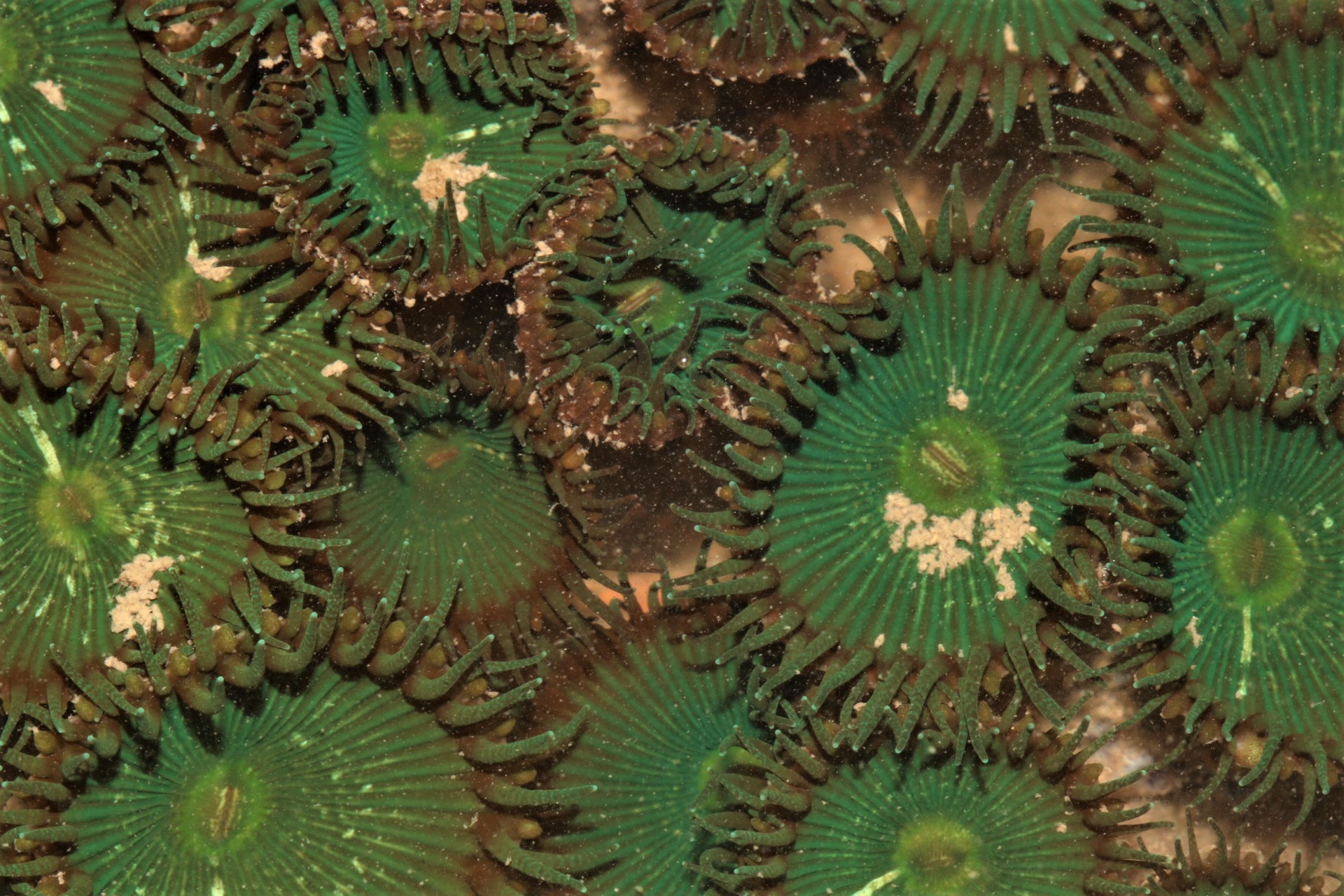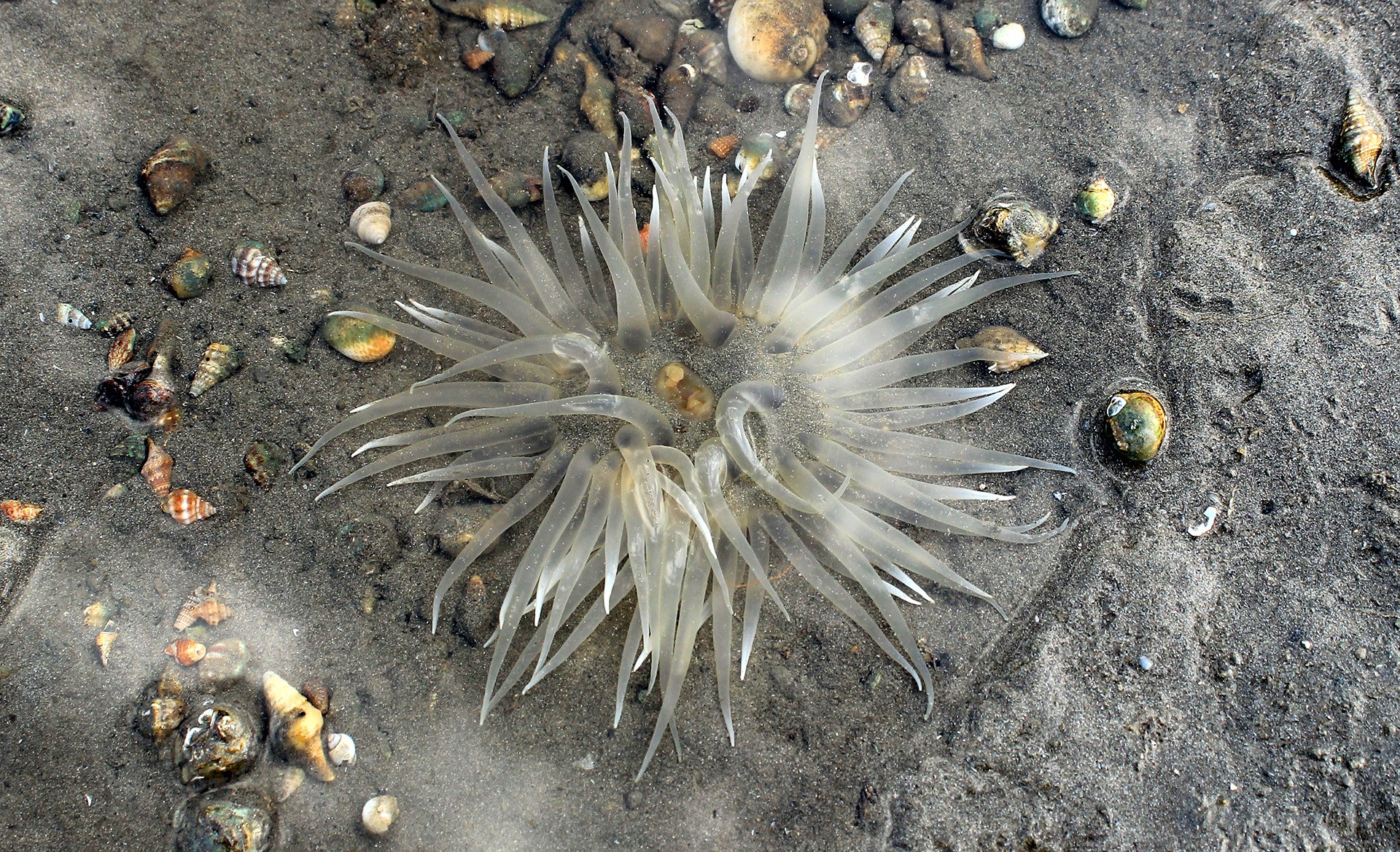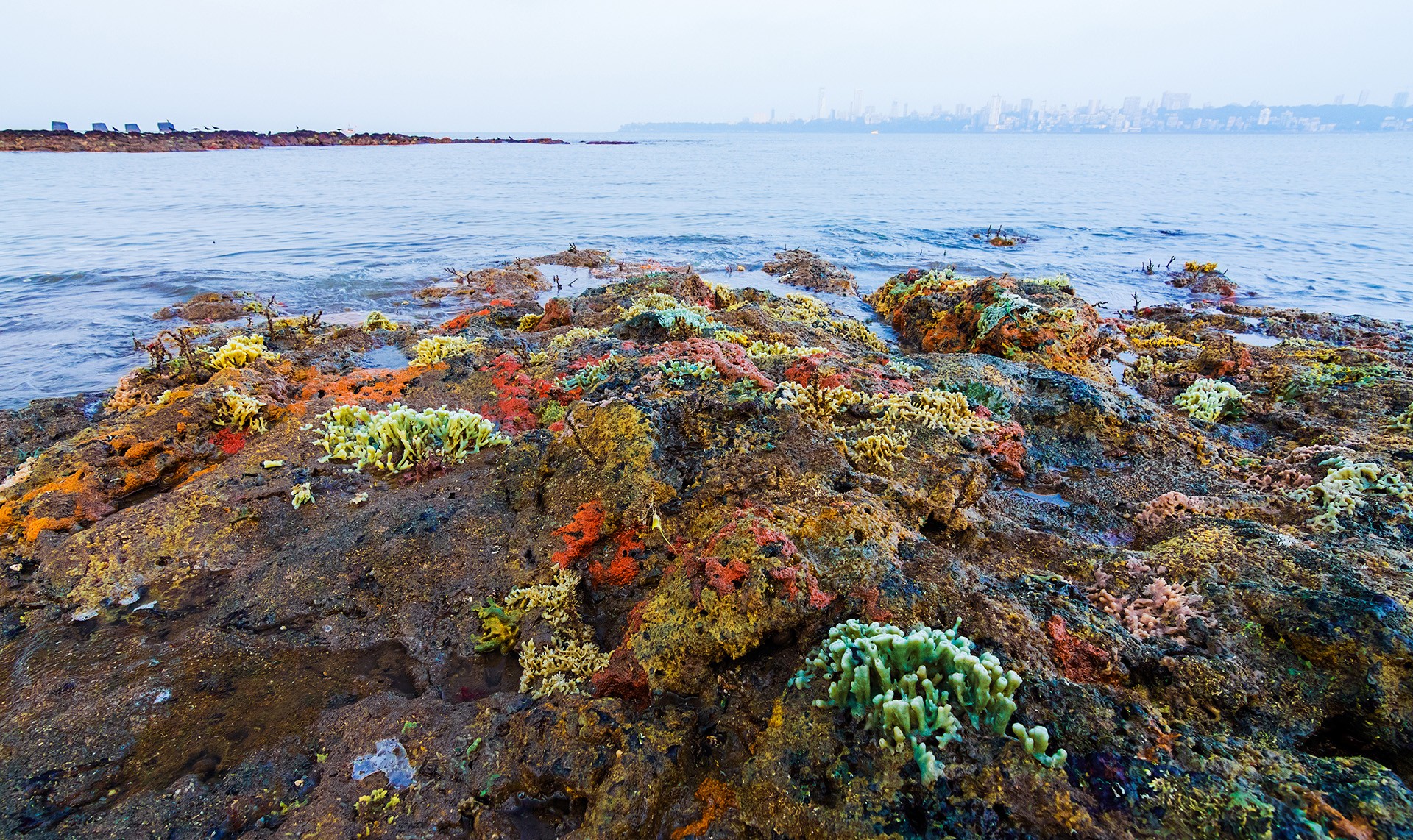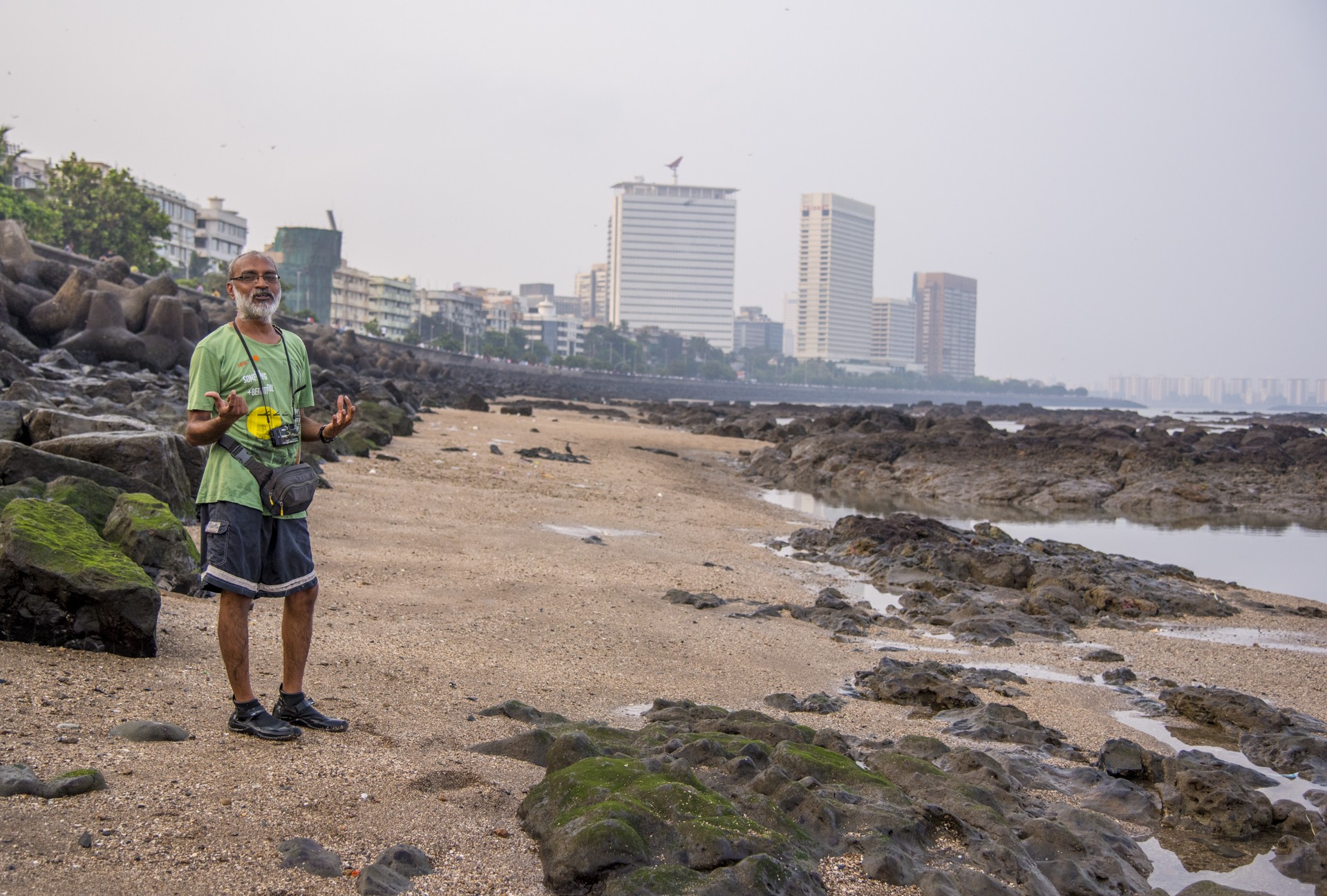A few days ago, a little before first light, a group of 25 people stepped out on to Girgaum Chowpatty, a fingernail-shaped sliver of beach in Mumbai. The strange procession kept mostly silent, looking down at the shore as they walked, sometimes squatting down for a closer look. It was low tide: the best time to see marine life that is otherwise hidden underwater. In fact, this was exactly why the group of shorewalkers had gathered together so early in the morning. They were on the first excursion organised by Marine Life of Mumbai (MLOM), a new initiative to call attention to the city’s mostly unseen coastal biodiversity.
MLOM was founded a little under a month ago by a team of marine enthusiasts: Pradip Patade, Abhishek Jamalabad and Siddharth Chakravarty. Patade, a self-taught marine expert, has been exploring intertidal zones in and around Mumbai for the past 25 years as a watersports instructor. In 2013, after almost 60 devotees were stung by stingrays at Girgaum Chowpatty during the Ganesh Visarjan, he realised the need to spread awareness about marine life, and began informally documenting the sights and stories of Girgaum Chowpatty. Jamalabad is a marine biologist studying the interactions between marine mammals and coastal fisheries. Lately, he’s been involved in a new kind of citizen science project to document marine life in Karnataka. Chakravarty, an academic researcher who has spent the last few years with the Sea Shepherd Conservation Society, studies labour supply chains on industrial fishing vessels.
Together, they’re hoping to bring Mumbai’s marine life into people’s everyday existence. “First-hand experiences like these walks help bring people closer to nature, and make conservation issues more real,” explained Chakravarty. Through the walks, they’re trying to build an active, more informed community – after all, the task of preserving Mumbai’s fragile coastal biodiversity shouldn’t fall on conservationists alone; it rests with all 20 million inhabitants of the metropolis.
For 25 of those inhabitants, the walk was a step in the right direction. At low tide, when the water had receded, different habitats such as sandy intertidal zones, mudflats, and mangroves were revealed to them. A host of hidden species came into view: sea anemones, hermit crabs, sand bubbler crabs, clams, decorator worms, and many more.
Gopal MS, a copywriter and photographer who went on the walk, said it was “a big eye-opener” for him. “What looks like a lifeless part of the sea is actually teeming with life. Every inch has a lot of little organisms not visible to the naked eye,” he said. It’s realisations like these that the MLOM trio are hoping to bring to light.
“The diversity of life here is far wider than you’d imagine. Things that you’d expect to see in Lakshwadeep or the Andamans – typically thought of as sanctuaries for marine biodiversity – can be spotted in Mumbai’s waters, not too far from busy roads running along the shoreline. Even in all the pollution, these species still live on,” said Jamalabad.
Jamalabad first met Patade in January this year. They discovered a shared vision to preserve Mumbai’s marine life, and decided to join forces to raise awareness about the threats it faces. As Patade put it, “Before we can talk about conservation, we first have to popularise our marine life.” After all, it is only when people are aware about the diversity and significance of Mumbai’s underwater organisms that issues such as unregulated construction, untreated sewage channelled into the Arabian Sea, or plastic pollution can be talked about. For Sarang Naik, another photographer who went out with them that morning, the walk achieved exactly that. Stepping out and actually seeing this part of the coastline made him realise just how reliant local fishermen are on these waters, he said.
The team behind the initiative hopes that just like the ocean, the initiative will swell to take on a life of its own. Hopefully, it will become a first-of-its-kind open-source database, providing valuable data for researchers and enthusiasts alike. Already, it is an online repository for photographs of species inhabiting Mumbai’s marine and brackish waters, along with information about their habitats. Maybe, groups who attend MLOM walks will branch out and conduct their own explorations of Mumbai’s intertidal zones. Where the story goes from here is ultimately up to the community they’re trying to create.
If you have stories or images you’d like to share, mail [email protected]. Do check out their updated guidelines for posts before you do. You can take a look at their Facebook and Instagram pages here. The next MLOM walk will take place on Sat May 27. Reach out to the team via email or social media if you'd like to register.





